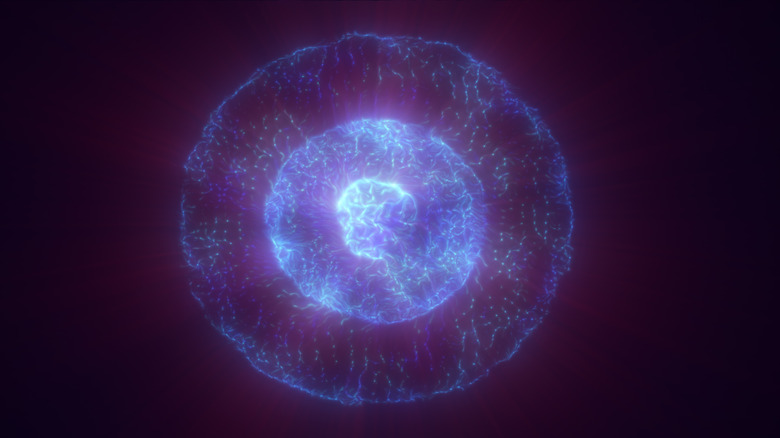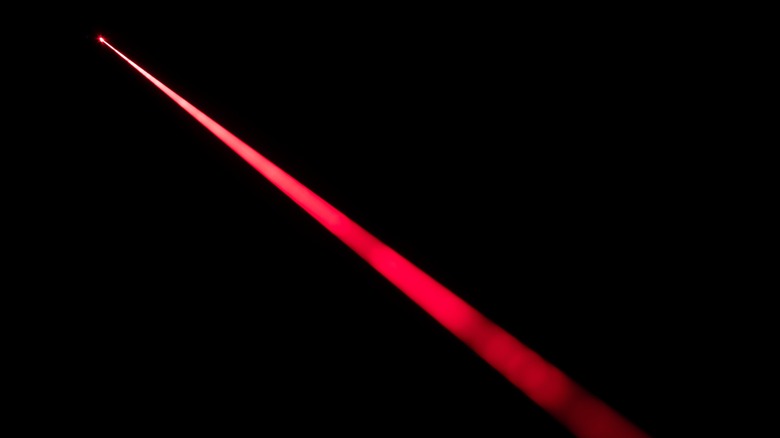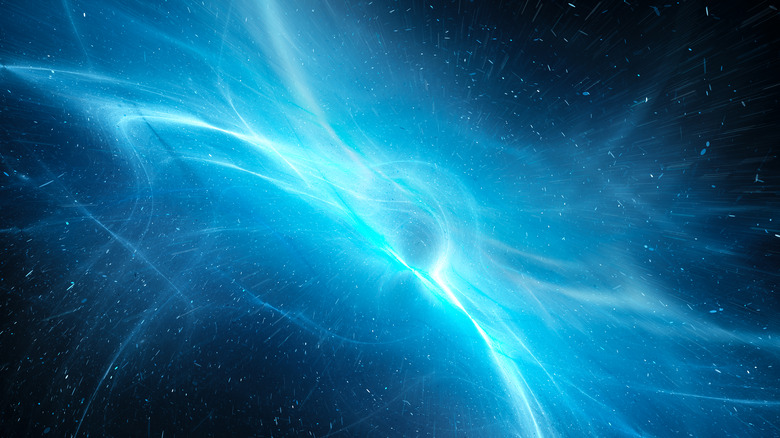How Lasers Might Help Scientists Answer Fundamental Questions About Gravity
On the very smallest scale, the world is mysterious and counter-intuitive. At this level, things simply don't work the way you'd expect them to, and quantum mechanics is our best attempt at applying a theory to this weirdness. It's the branch of physics that deals with the way atomic and subatomic particles work and behave, helping us to understand this mysterious sphere of our existence. Quantum field theory goes a step further and marries quantum mechanics with the concept of fields. These fields, much like electric and magnetic fields, are best envisioned as vast bodies of fluid shifting and oscillating in space. They are ever-present, even though waves within these fields are said to produce the particles that we consider the fundamental building blocks of existence.
Within quantum field theory, the standard model of physics, which describes 12 elementary particles and four fundamental forces, becomes 16 fields: 12 for matter, four for the forces. These forces are electromagnetic, weak and strong interaction, and gravity. Together, according to quantum field theory, these matter and force fields essentially create the world we live in. For instance, when the electron field ripples, it creates an electron particle. But gravity is yet to be fully accommodated into this model.
One of Albert Einstein's breakthroughs was the theory of general relativity, which involved the discovery that the field associated with gravity was actually space and time itself. This poses a problem for quantum theorists. General relativity relates to larger masses and objects on the scale of planets and even galaxies, while quantum theory relates to much smaller subatomic objects, and nobody has been able to successfully combine the two. Indeed, Einstein himself was stumped by the grand problem of trying to reconcile general relativity with quantum mechanics. But a technique developed at MIT has now brought us a step closer to that goal.
A new experiment combines two techniques to measure miniscule movements
Since the rules of general relativity break down in certain situations, such as in relation to black holes, a new, more comprehensive theory of gravity is required — one which would combine the ideas of quantum theory with general relativity. For now, however, there is no fully complete or consistent quantum theory of gravity. But researchers at MIT are making preparations for experiments that can test the quantum nature of gravity, and just in case you needed such a groundbreaking idea to sound even cooler, these experiments use lasers.
The researchers published a paper on their initial experiment, which hasn't yet tested gravity at a quantum level but lays the groundwork for such experiments in the future. "Active laser cooling of a centimeter-scale torsional oscillator" was published in the journal Optica, and it describes how the MIT team demonstrated laser cooling of a centimeter-long torsional oscillator — a type of instrument that has long been used for gravity research. In this example, lasers are used to cool the torsional oscillator from room temperature to 10 millikelvins (1/1,000th of a kelvin). This essentially makes a mechanical system large enough to measure gravity (the oscillator), while still quantum enough to reveal how gravity interacts with it.
What makes this latest development so interesting — besides the potential it reveals for testing the quantum nature of gravity — is that the researchers essentially combined two entirely separate techniques. Lasers have been used to cool atomic gases for some time, but this is the first time this technique has been used on torsional oscillators, which are extremely useful tools for measuring gravity.
We might soon discover whether gravity is quantum or not
In their experiment, the MIT researchers employed a mirrored optical lever. Traditional optical lever experiments involve shining a laser onto a mirror and detecting very slight changes in the tilt of the mirror. Since tiny movements in the angle of the mirror result in larger movements on the reflected laser beam detector, scientists are able to more easily measure signals that otherwise would be too small to confirm. However, there are issues with this approach. Everything from air currents, small vibrations, or even imperfections in the optics can cause problems with the beam which falsely reads as motion on the detector.
To get around this problem, the team used a mirrored optical level technique, which essentially uses a mirrored version of the laser to adjust for the unwanted movements typically seen in optical lever experiments. When the two beams combine at the detector, you get a much more accurate signal from the oscillator thanks to the jitter being cancelled out by the mirrored beam. In the MIT experiment, this approach reduced noise by a factor of a thousand, which essentially means the researchers could detect motion in the oscillator with unprecedented precision.
At this stage, the researchers are able to detect motion with a precision 10 times better than the oscillator's quantum zero-point fluctuations. But there is still a lot of work to do before they're able to actually test the quantum nature of gravity. That work will take place in the near future, using optical interactions that have been further strengthened, which could potentially allow for experiments where two oscillators interact only through gravity. Such an experiment might finally answer the question of whether gravity is quantum or not.


